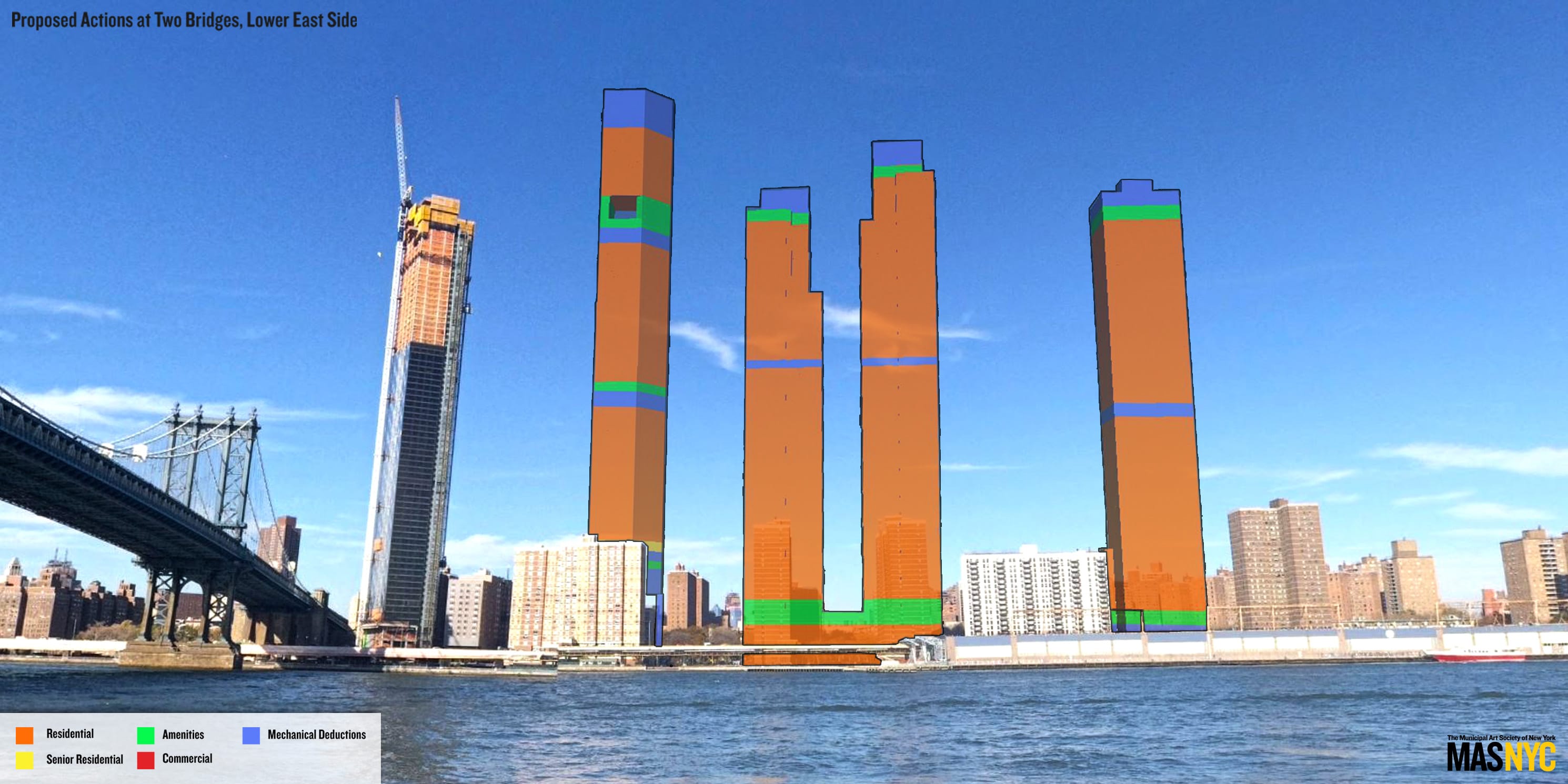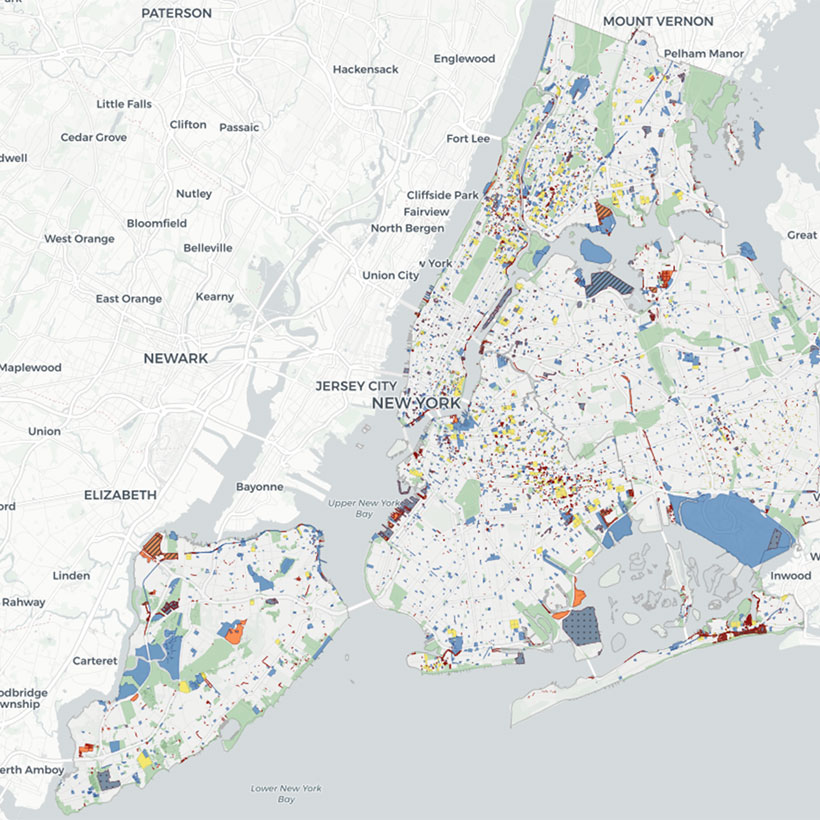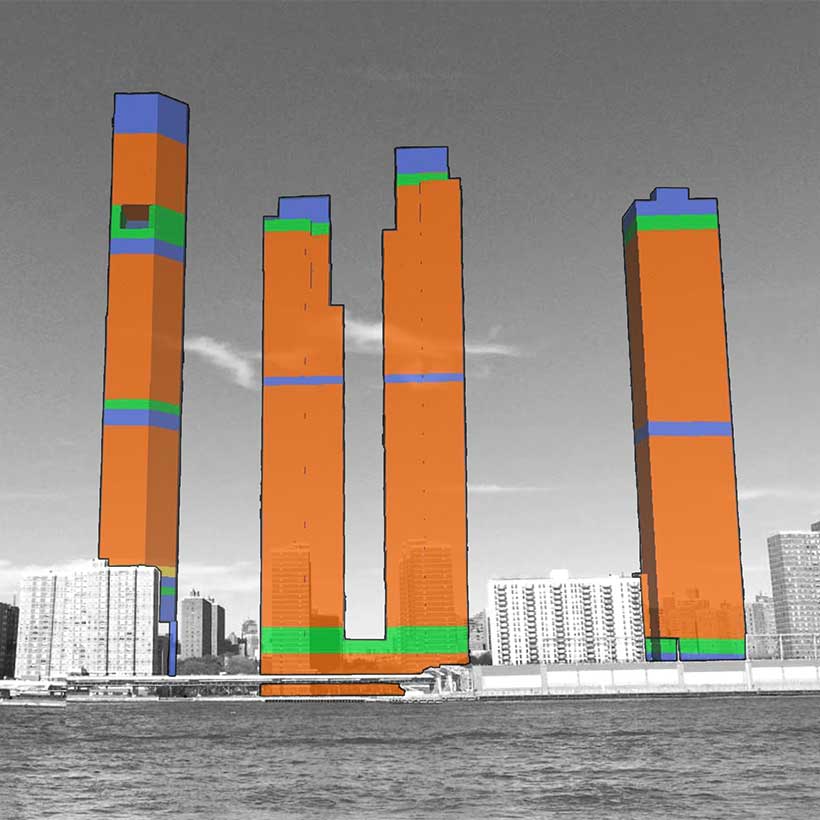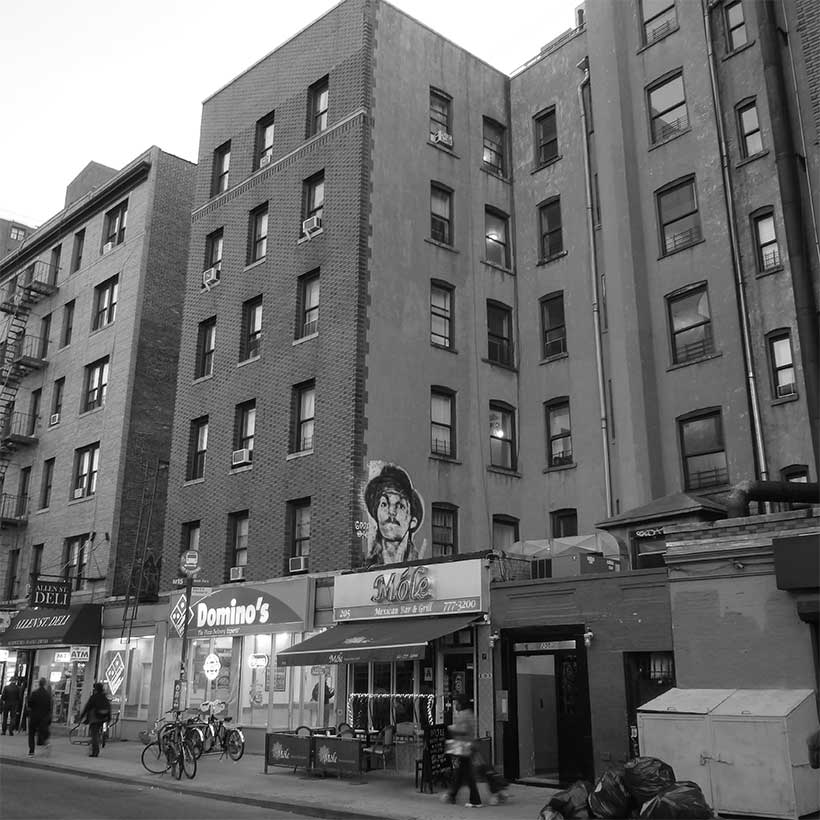MAS Files Amicus Brief Regarding Two Bridges Development
Brief in support of the City Council's and Manhattan Borough President's Challenge
Preliminary Statement
The Municipal Art Society of New York (“MAS”) submits this amicus curiae brief in support of the challenge by the City Council and Manhattan Borough President to the City Planning Commission’s approval of four soaring luxury residential towers in the low- and middle-income Two Bridges Large-Scale Residential Development (the “LSRD”) on the Lower East Side of Manhattan.
MAS is a domestic not-for-profit advocacy organization that has, for 125 years, worked to educate and inspire New Yorkers to engage in the betterment of our city. With a team of preservationists, urban planners, architects, and attorneys, MAS has played a major role in protecting the city’s legacy spaces, encouraging thoughtful planning and urban design, and fostering stable communities throughout the five boroughs. It was instrumental in the passage of the 1916 Zoning Resolution, the first comprehensive zoning program of its kind and the model for innumerable zoning laws throughout the country. It also helped to establish the City Planning Commission (the “Commission”), as well as the Public Design Commission and the Landmarks Preservation Commission. For more than a century, it has been a guardian and a steward – and sometimes a critic – of zoning and land-use planning in the city.
Download Testimony
The Commission’s decision in this case not to require the developers to apply for special permits and undergo review under the City’s Uniform Land Use Review Procedure (“ULURP”) is a dangerous precedent. The agency’s explanation for its decision – that the development here would be only a “minor modification” of the LSRD – is risible. Currently the tallest building in the LSRD is 27 stories; the proposed towers would be 80, 70, 63, and 63 stories, and the tallest would rise to 1,008 feet. There are now 1,043 dwelling units in the LSRD; the towers would triple the figure, adding 2,775 units (of which 2,081 would be market rate). See Two Bridges Final Environmental Impact Statement (the “FEIS”), dated November 23, 2018, Chapter 1 (www1.nyc.gov/site/planning/applicants/env-review/two-bridges.page). It is difficult to imagine a more major modification. The following illustration makes the point better than a string of numbers:
The purpose of this amicus brief is not to repeat the Petitioners-Complainants’ legal arguments that the decision of the Commission is arbitrary and capricious; the arguments are well-articulated in the Amended Petition-Complaint. Instead, it is to provide a fuller description of what ULURP does, and how the Commission’s failure to use it here subverts the regulatory process.
ULURP is the statutory framework for a joint public-private consideration of major land-use changes in the city. On a governmental level, it balances the Commission’s experience and perspective with those of the City Council and Borough President. On a private level, it engages citizens early in the process and, through the City Council’s authority to override the Commission’s decision, provides them with the leverage they need to insure that the project respects both the letter and the spirit of the zoning laws.
The implications of the Commission’s decision extend well beyond the Two Bridges LSRD. There are LSRDs throughout the city, as well as Large Scale General Developments and Large Scale Community Facility Developments. Since 2010, 19 of these have undergone ULURP review for modifications of one kind or another. See Mayor’s Office of Environmental Coordination, CEQR Access Portal. To allow the Commission to characterize the modifications in this case as “minor” is to threaten the integrity of all such developments, and to undermine the essential purpose of the statute.



